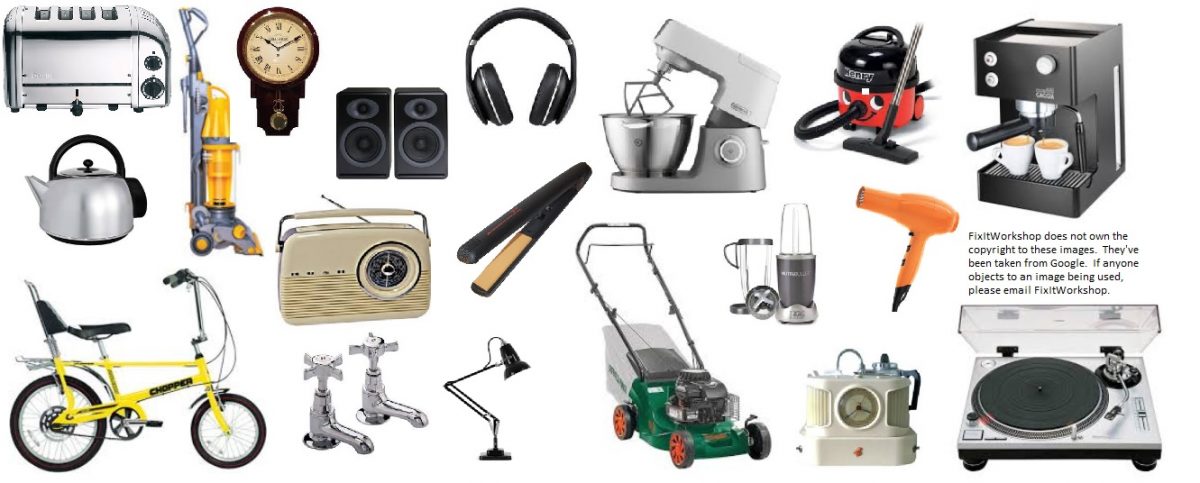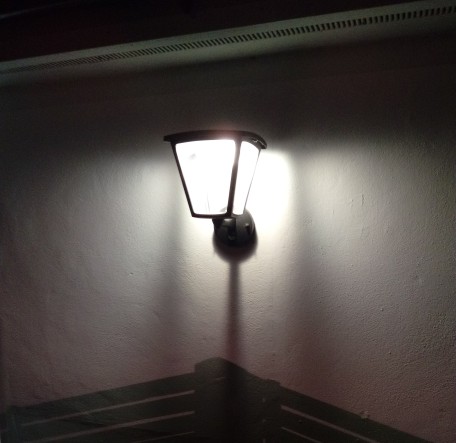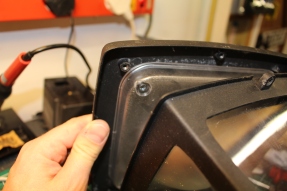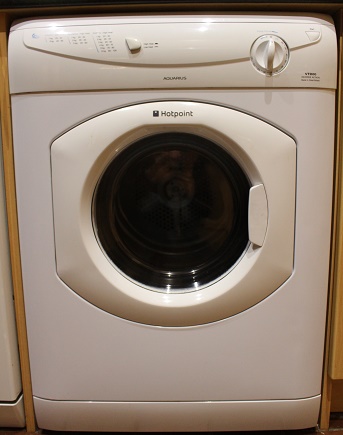During a recent Toy Doctor surgery at a Dad La Soul/ Tot Rockin’ Beats event http://www.totrockinbeats.com/dad-la-soul I attempted a repair on a kids toy that I couldn’t get working in the two hours we had, so I asked if I could take it home to the workshop where I have more tools at my disposal. Good thinking Batman.
The Imaginext Super Hero Flight Gotham City (catchy title for a toy) was much loved, but the flying bit (circled in red below) had stopped working and no longer did anything when switched on. No fun without the flight bit.
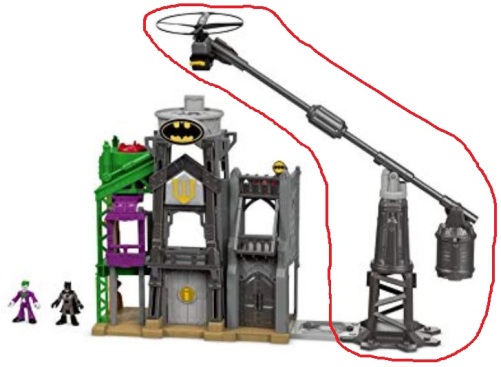
Make and model: Imaginext Super Hero Flight Gotham City
Fault reported: Not working
Cost of replacement: £45.00 approx.
Cost of parts: £0.00
Hours spent on repair: About two hours- although to be honest, I lost count with this one
Tools needed: Cleaning cloths, small fine file, soldering iron
Sundry items: Contact cleaner
Repair difficulty: 6/10
Cups of tea: 4
Biscuits: 10, maybe the whole pack, I lost count (Custard Creams)
The battery-powered flying thing on a weighted boom should fly about in a circular fashion and be controlled by the city platform, presumably by remote control from the main city bit.
Upon opening up the battery compartment, the problem revealed itself. The previous batteries had leaked and the spillage has corroded the battery terminals. No bother I thought, just a matter of cleaning-up the metal surfaces and we’d be back in business. How wrong I was. Even with new batteries installed, nothing happened, how very dissapointing.
No, it wasn’t going to be that easy and that was the theme for the rest of the repair. Everywhere I turned, whether it was trying to open up the casings, inspect wiring or generally take something apart, I was going to be met with glued shut fixings and more problems.
Construction on this toy was very strange. Surfaces on the casing were sometimes glued and screwed together, very odd, and I guess that method must have been used due to production time and cost saving.
The wiring between the flying bit and base checked out OK and the motor spun when I applied some charge briefly to the terminals, so that all seemed fine.
Upon opening up the gubbins where the switch was, the problem with the toy presented itself. The mini printed circuit board had suffered from battery leakage corrosion and was shot. Whatever it was meant to do was in the distant past. So, this toy was for the WEEE skip, as there was no chance of getting a replacement.
Well, hang on a minute, we don’t give up like that do we.
I decided that I could make the toy work albeit without the printed circuit board by re-wiring the motor, using the existing loom and switch, so that the motor and therefore helicopter bit worked as it should. This would mean that once the switch on the base of the unit was turned on, the helicopter would start and it would not be possible to turn it off without grabbing the moving base weight first. It clearly wasn’t designed like that, but I had at least got it working again.
So, here was my dilemma: Give up with something I couldn’t get a part for or get it working again, albeit with a removed (percived) safety feature, so that the toy could still be enjoyed. I went with the latter as I thought that the danger was negligable.

Was I right?

